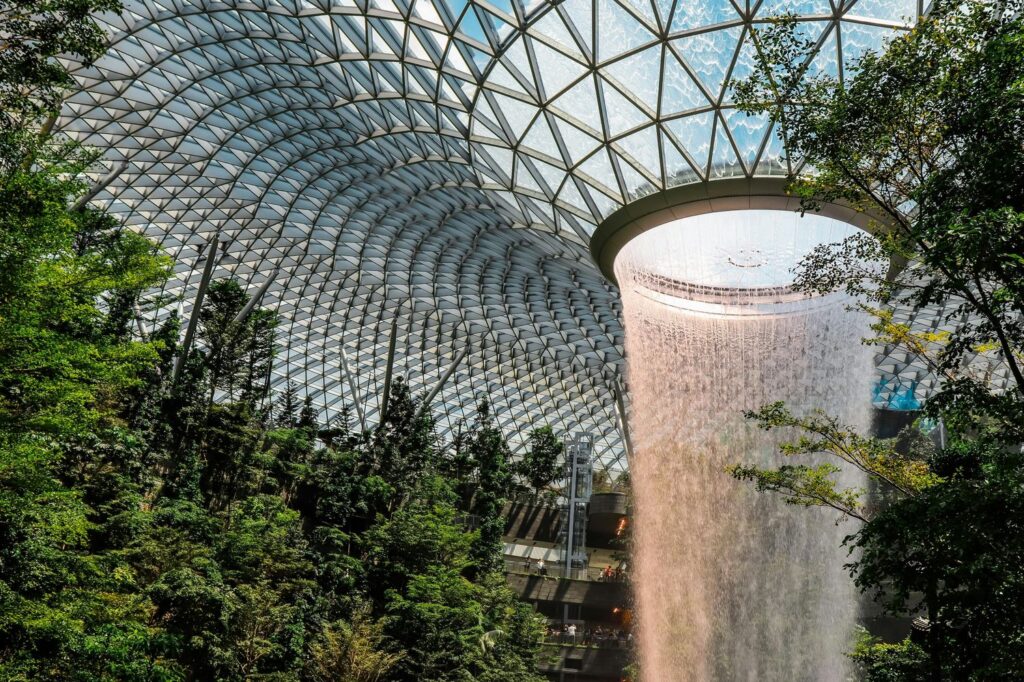Writer: Neal Bharadwaj
Sustainable development, one of the lynchpins that have come under the tangent of urban growth, catalyzed by a host of challenges, the larger part of which emanates from rapid urbanization and climate change. Cities, courtesy of their populace that has driven major growth in most countries, have been majorly considered in engaging with SDGs.
The paper is going to discuss strategies and solutions while dealing with urban area sustainable development from three dimensions, namely, environmental, economic, and social. It reflects on different ways of planning and developing cities that support the sustainable future, with the city-based case studies of Copenhagen, Curitiba, and Singapore.
Introduction
It calls for the building of livable cities that are resilient and supportive of existing and future generations. From reducing carbon emissions to making economies more vital and fostering social equity, it ranges from everything. In this regard, cities such as Copenhagen, Singapore, and many others have led quite a remarkable path in the field of sustainable urbanism, carrying on with important lessons of how the many opposing objectives can be balanced.
This article, therefore, discusses some of the central sustainability strategies adopted by these cities and what it means in terms of urban planning and development.
Key Strategies and Remedies
Talking about sustainable cities, one knows they require nothing less than the best solutions to be put into place with innovation and creativity. These can therefore be elaborated under three broad categorizations: environmental sustainability, economic sustainability, and social sustainability.
Environmental Sustainability:
In essence, it is on the management of natural resources and reduction in environmental impacts within the city. The ambitious goals set by the city of Copenhagen are to be carbon-neutral no later than 2025, using a mix of variable renewable energy sources, efficient building design, and sustainably managed transport systems. Some of the more basic strategies are:
Renewable energy The town invested in renewable energies such as solar, wind, and bioenergy. For example, in the case of Copenhagen, investments were made in wind farms and district heating installations, intending to reduce the consumption of fossil fuel.
These support mechanisms by cities can range from the provision of simple green open space, parklands, and urban forestry to supplying green roofs and walls in heat islands, managing storm water, and improving air quality. For instance, Gardens by the Bay in Singapore have been designed to raise biodiversity and improve the quality of life for city dwellers through integrated use of greens.
This proves that sustainable mobility—that is cycling, walking, and public transport use—reduces dependence on private mobility and, therefore, emissions. The precedent set by bus rapid transit in Curitiba realized the dream that a well-managed public transport system could offer improvement in mobility in cities at the same time as reducing congestion.
Economic Sustainability:
Long-term economic growth should also involve little environmental degradation and social exclusion. This might perhaps be realized within cities where there is diversified economic activity, innovation, and smart governance. The key strategies are contained in: Mixed-use development: Residential, business, and industries locate close to each other. This realization allows for local economic development without the necessity for long-distance travels for economic agents. It results in the incentives toward walkability and neighborhood levels of business activities in accordance with the compact city model, such as Barcelona model, for example.
Green Economy: Investments in green technologies and industries contribute partly to the goals of the green economy to be attained by creating jobs which trigger economic activities. Cities such as Freiburg in Germany target the aspects of originality, creativity, and through the promotion of renewable energies and building green industries, there is the realization of sustainable economic growth. Mobilization of the required resources and expertise by the governments and businesses that make partnerships with civil societies on sustainable urban projects. The URA in Singapore is working together with the private developers to implement more green building and smart city technologies, which can further strengthen the building of economic resilience.
Social Sustainability:
Social sustainability means communities that are inclusive, just, and cohesive in their nature. It is catered by giving its basics such as accessibility, social inclusion, and belonging to the same community. Some of the strategies in the same direction include: Affordable housing should, therefore, be socioeconomically diversified in order to avoid segregation in housing and as a way to chip in on social equity. Probably the best example is Vienna’s social housing, which is good quality yet really affordable, ranging across classes from all walks of life. Community Involvement: The participation of residents in decision-making processes engenders social capital and ownership in them. The participatory planning processes of programs and projects in a community help in shaping cities like Porto Alegre, Brazil, which are cohesive and resilient. Public Space that is Inclusive: All designs of the public space consider the factor of access and hence are inclusive for one and all. Interaction amongst people invites themselves to be involved in community building. High Line, New York City-public park built from an elevated rail-is a social space of dynamism, attracts diverse groups and eventually leads to community building.
Conclusion
Sustainable development is the complex; burdened process of comprehensive planning and development of urban settlements. Developing cities to be more resilient, liveable, and inclusive is sustainable design in this light. All this explains that, indeed, sustainable urbanism is not an off-the-shelf solution; rather, it requires tailored strategies reflecting local context and needs. Cross-city learning from one another and models of public-private partnership give such pointers to undertake sustainable urban development in the world’s countries. It is that which will mark the need for original thought and increasing cooperation of all toward working for sustainable urban futures. Putting the concept of sustainability into the agendas will smooth the needs of the citizens today and ensure that further generations down the line will be in for a future brighter and safer than at present.
Sources:





